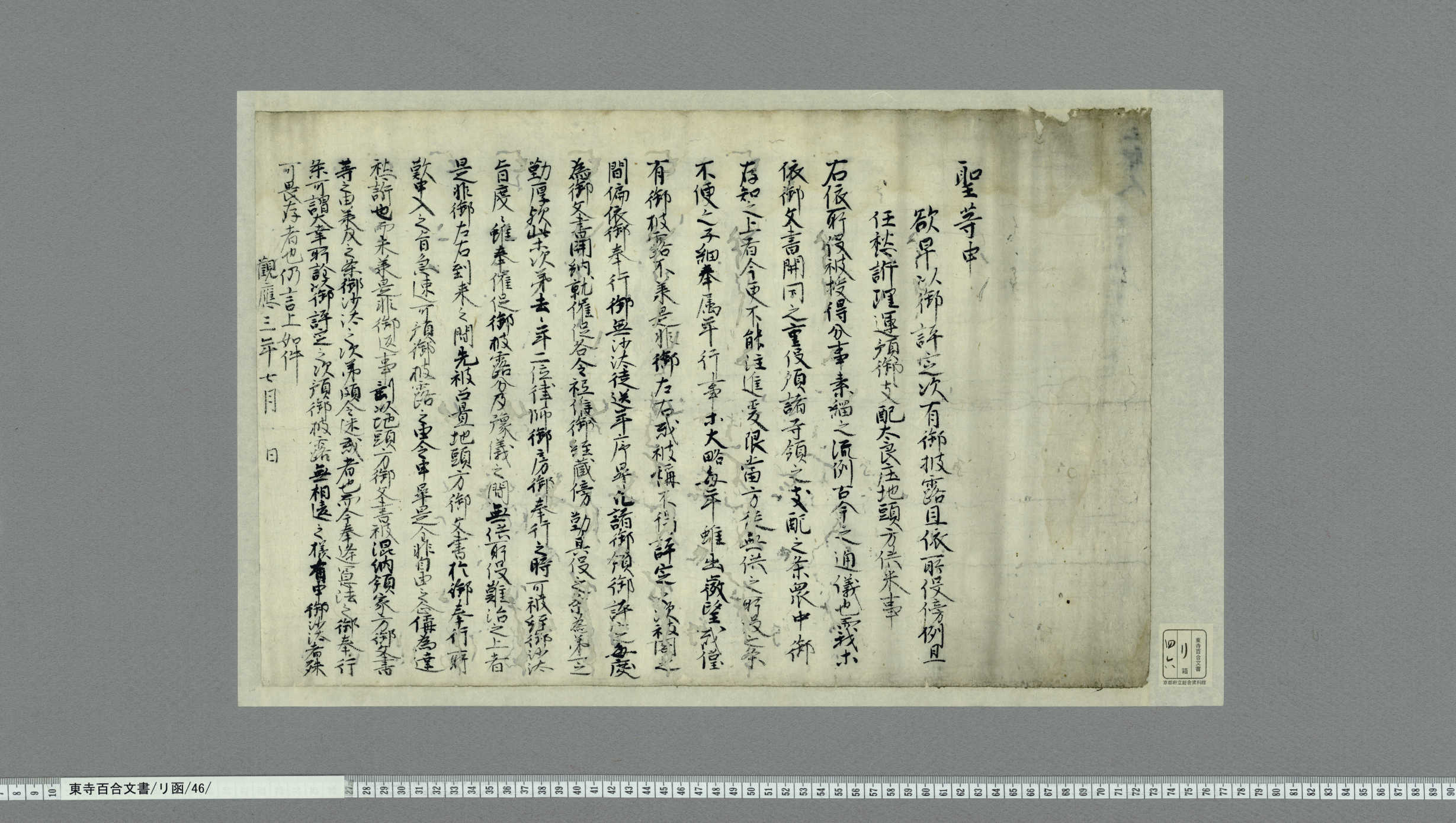Monks who were assigned to protect the statue of Kukai (空海) at Sai-in Mieido (西院御影堂) were called hijiri (聖). They were also called sanshonin (三聖人, lit. three saints) as the quota of hijiri was three. The position of hijiri is believed to have been established when the statue of Kukai was enshrined in Sai-in Kyozo (西院経蔵, Sai-in Library) in 1233.
Although documents of various monastic organizations, including Nijuikku-kata (廿一口方) and Chinjuhachimangu-kata (鎮守八幡宮方), were housed in the Sai-in Library situated inside Mieido, monks of these organizations were not allowed to freely enter the library. Only the hijiri monks were allowed to enter. The retrieval and return of documents from and to the library were controlled by the hijiri monks, similar to how librarians today retrieve books from stacks for you.

Item (46) of Box-ri is a petition in which hijiri monks claim a share of rice paid as tax (referred to as “jitogata-kumai of Tara-sho, Wakasa Province”). Hijiri monks state that they are entitled to receive the tax with the approval of every monk due to their significant authority of controlling document retrieval and return. They also state that they give top priority to the management of the library of Mieido over all other duties, responding to a request to retrieve documents more quickly.

The document above is ukebumi (請文、an oath) written by Kanitsu (観一), who had been newly appointed hijiri. He pledges that he will open and close Mieido and retrieve and return documents in accordance with the rules, that he will always follow shumei (衆命、kuso monk instructions), and that he will obediently step down from his position if he breaks this oath. To become a hijiri monk, a candidate was required to be recommended by two other hijiri monks.